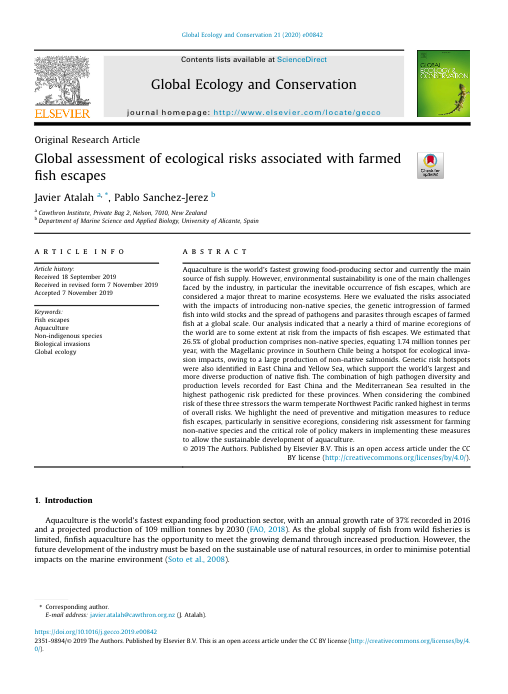Global assessment of ecological risks associated with farmed fish escapes

ABSTRACT
Aquaculture is the world’s fastest growing food-producing sector and currently the main source of fish supply. However, environmental sustainability is one of the main challenges faced by the industry, in particular the inevitable occurrence of fish escapes, which are considered a major threat to marine ecosystems. Here we evaluated the risks associated with the impacts of introducing non-native species, the genetic introgression of farmed fish into wild stocks and the spread of pathogens and parasites through escapes of farmed fish at a global scale.
Our analysis indicated that a nearly a third of marine ecoregions of the world are to some extent at risk from the impacts of fish escapes. We estimated that 26.5% of global production comprises non-native species, equating 1.74 million tonnes per year, with the Magellanic province in Southern Chile being a hotspot for ecological invasion impacts, owing to a large production of non-native salmonids.
Genetic risk hotspots were also identified in East China and Yellow Sea, which support the world’s largest and more diverse production of native fish. The combination of high pathogen diversity and production levels recorded for East China and the Mediterranean Sea resulted in the highest pathogenic risk predicted for these provinces. When considering the combined risk of these three stressors the warm temperate Northwest Pacific ranked highest in terms of overall risks.
We highlight the need of preventive and mitigation measures to reduce fish escapes, particularly in sensitive ecoregions, considering risk assessment for farming non-native species and the critical role of policy makers in implementing these measures to allow the sustainable development of aquaculture.